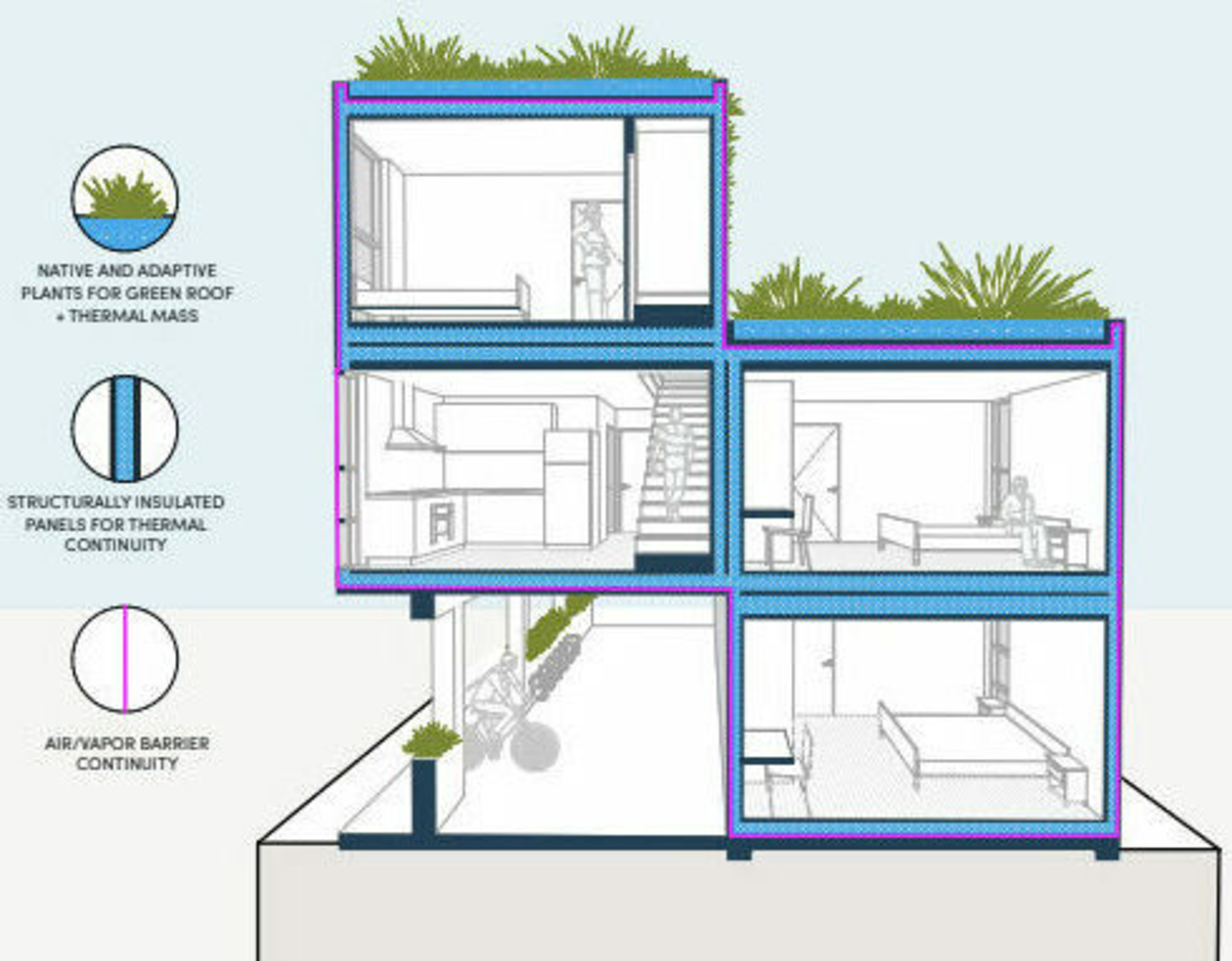The state’s Jan. 31 deadline has come and gone, and 69 out of 109 jurisdictions in the Bay Area have failed to submit their required eight-year housing plan to the state.
Advocacy groups like YIMBY Law are already suing cities and counties, claiming they’ve violated state law by missing the deadline. But in the meantime, developers are preparing to file projects under the “builder’s remedy,” which means cities and counties cannot deny housing projects just because they violate local zoning plans.
That enticing possibility brought a crowd to Downtown San Francisco on Wednesday night, where housing advocates and architects gathered to celebrate the chance to build more aggressively and to share their dream projects.
The proposals offer a glimpse into what new developments might be popping up in cities, from Berkeley to Hillsborough, that are out of compliance with state law.

Untitled (Builder’s Remedy) │ Mayberry Workshop
Architect Adam Mayberry said his team created the builder’s remedy project with flexibility in mind. The proposal includes three types of stackable “modules”: one studio; a one-bedroom, one-bathroom; and a two-floor three-bedroom, two-bathroom unit.
Mayberry works out of San Jose, but said the design could fit in any jurisdiction in the Bay Area. The design, which doesn’t attempt to look like a traditional single-family home, is a product of around a decade spent trying—and often failing—to work with local jurisdictions to get housing built in the Bay Area.
“It hasn’t worked playing nice, so I’m taking the opposite approach,” Mayberry said.

2 + 3 Fiveplex │ Studio AMA
Adam Mayer, on the other hand, isn’t quite ready to piss off decision-makers at City Hall. His duplex-in-front, triplex-in-back design looks like a single-family home with its sloped roof and courtyard space.
He sees them gaining popularity in midsize suburbs like Sunnyvale, Palo Alto or Cupertino—all cities that are now subject to the builder’s remedy.
Mayer said he wants to leave the political pressure to organizations like YIMBY, while developers and architects like him continue to build good relationships with city halls and pioneer designs that look and feel like they belong.
“When you look at it, you might not know it’s a duplex,” Mayer said. “Really the idea here was not to offend local municipalities.”

SF Corner Lots │ Studio Sarah Willmer Architecture
While San Francisco did get certification for its housing element in time, architect Sarah Willmer has bigger plans than just capitalizing on today’s political landscape. She says she’s been working with local advocacy groups as well as the city’s planning department to refine her designs for the west side of the city, which is due for an upzoning in the next three years under the city’s new housing plan.
Her eight-unit design is made to fit into the city’s neighborhoods dominated by townhomes, and looks just like them. The eight-unit design features a studio-like “junior one-bedroom” on the bottom level with three-bedroom and two-bedroom townhomes stacked on top.
The 10-unit design, taller and featuring bottom-floor retail, is intended for corner lots in mixed-use areas along major transit corridors, and emphasizes sustainable design with its solar heat and cooling systems.
“You can’t solve housing without climate, and you can’t solve climate without housing,” Willmer said.

Context-Sensitive 5-Unit │ Dreiling Terrones Architecture
Ted Catlin’s design—a five-unit building with a breezeway, outdoor carport and bike lockers—aims to be achievable for developers. With its front porch and white shutters, it looks like any other home in the suburbs.
Catlin’s firm is based out of Burlingame, but he thinks the design could fit into most Bay Area cities, “from Burlingame to Berkeley” without alienating planning officials or in the neighborhood.
“[Developers] can go to the bar at the end of the week and not be worried about what their neighbors say,” Catlin said. “It’s not Market Street, but it’s Main Street, California.”